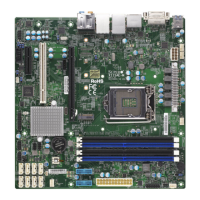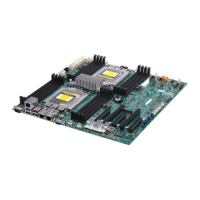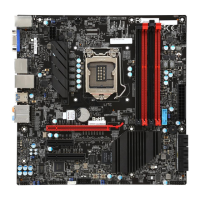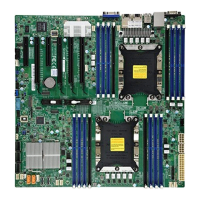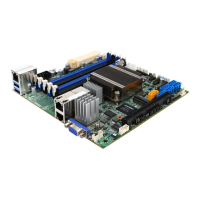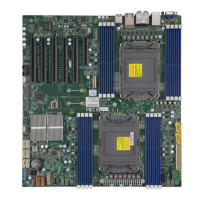19
Chapter 1: Introduction
1.2 Processor Overview
The Supermicro M11SDV-4C/4CT/8C/8CT/8C+-LN4F motherboard supports an AMD EPYC™
3000 SoC series processor with up to 8 cores and 16 threads per socket. The AMD EPYC™
3000 upholds optimized performance with NVMe storage, offering up to 512GB of memory,
with speed of up to 2666MHz and 50W of power, while offering performance, reliability,
and high intelligence. It offers an Intelligent Platform Management Interface (IPMI) feature,
IPMI out-of-band, and a power usage effectiveness mode that provides management and
monitoring capabilities, as well as a M.2 solid-state drive. As a low-power system-on-a-chip
(SoC) motherboard, the M11SDV-4C/4CT/8C/8CT/8C+-LN4F is optimized for a variety of
workloads that requires high compute power in a compact form-factor.
The AMD EPYC™ 3000 supports the following features:
• Zen Microarchitecture, 14nm, System on Chip, RAS, Secure Memory Encryption (SME),
and Secure Encrypted Virtualization (SEV) for securely isolating hypervisors and virtual
machines VMS
• 16MB L3 Cache, up to 8 Core and 16 Thread
• ACPI Power Management Rev. 6.1
• Adaptive Thermal Management/Monitoring
• PCI-E 3.0, SATA 3.0, NVMe
1.3 Special Features
This section describes the health monitoring features of the
M11SDV-4C/4CT/8C/8CT/8C+-LN4F motherboard. The motherboard has an onboard
System Hardware Monitor chip AST2500 that supports system health monitoring.
Recovery from AC Power Loss
The Basic Input/Ouput System (BIOS) provides a setting that determines how the system
will respond when AC power is lost and then restored to the system. You can choose for the
system to remain powered off (in which case you must press the power switch to turn it back
on), or for it to automatically return to the power-on state. See the Advanced BIOS Setup
section for this setting. The default setting is Last State.

